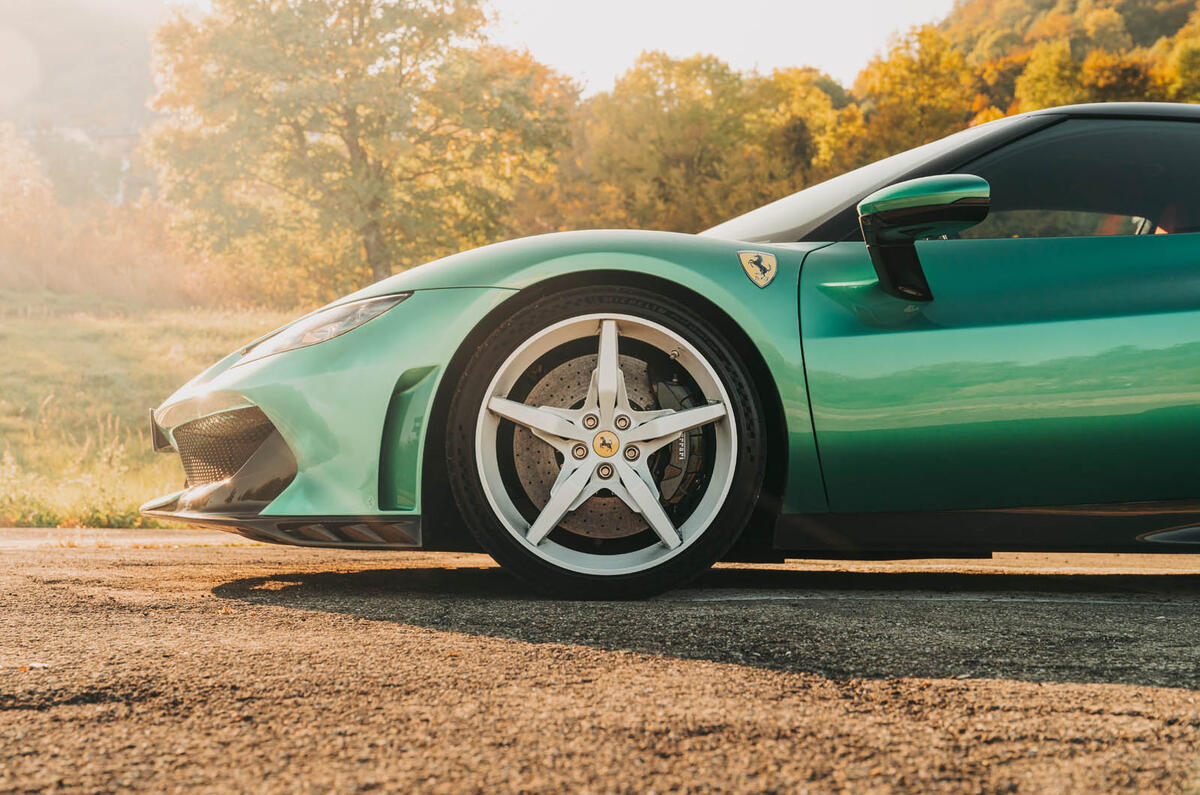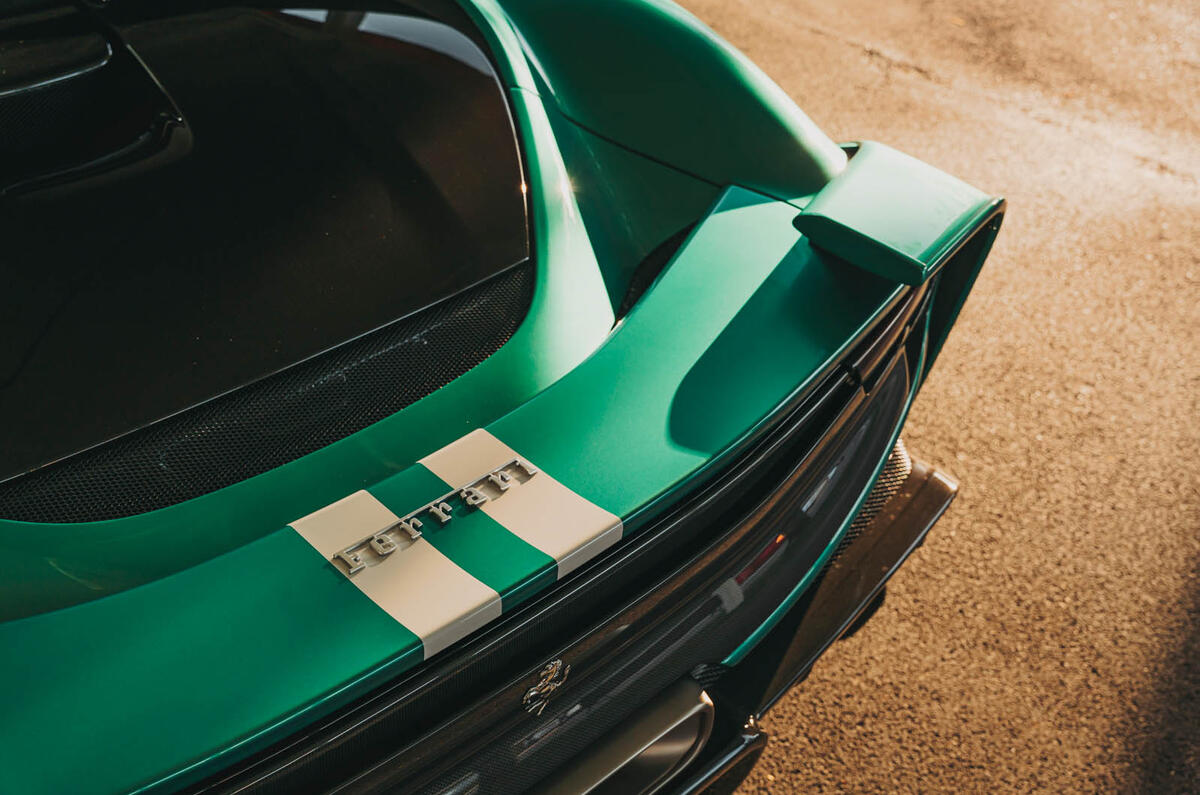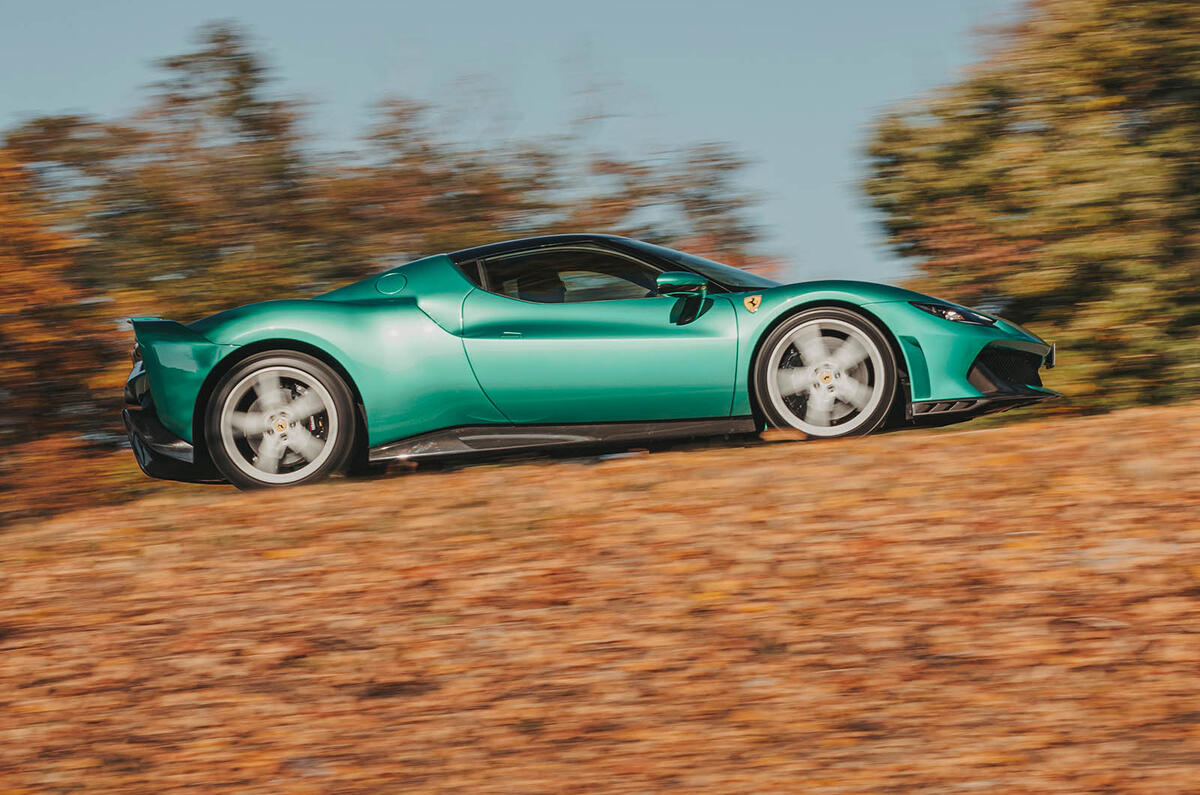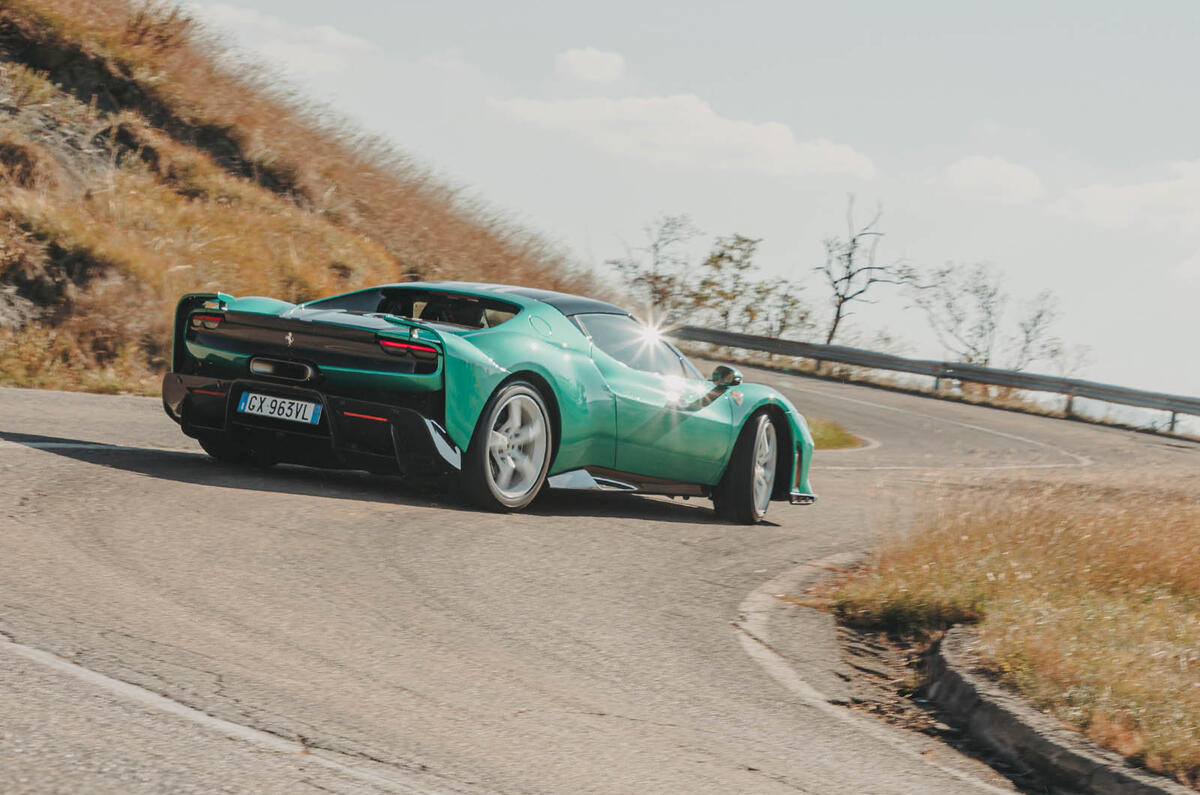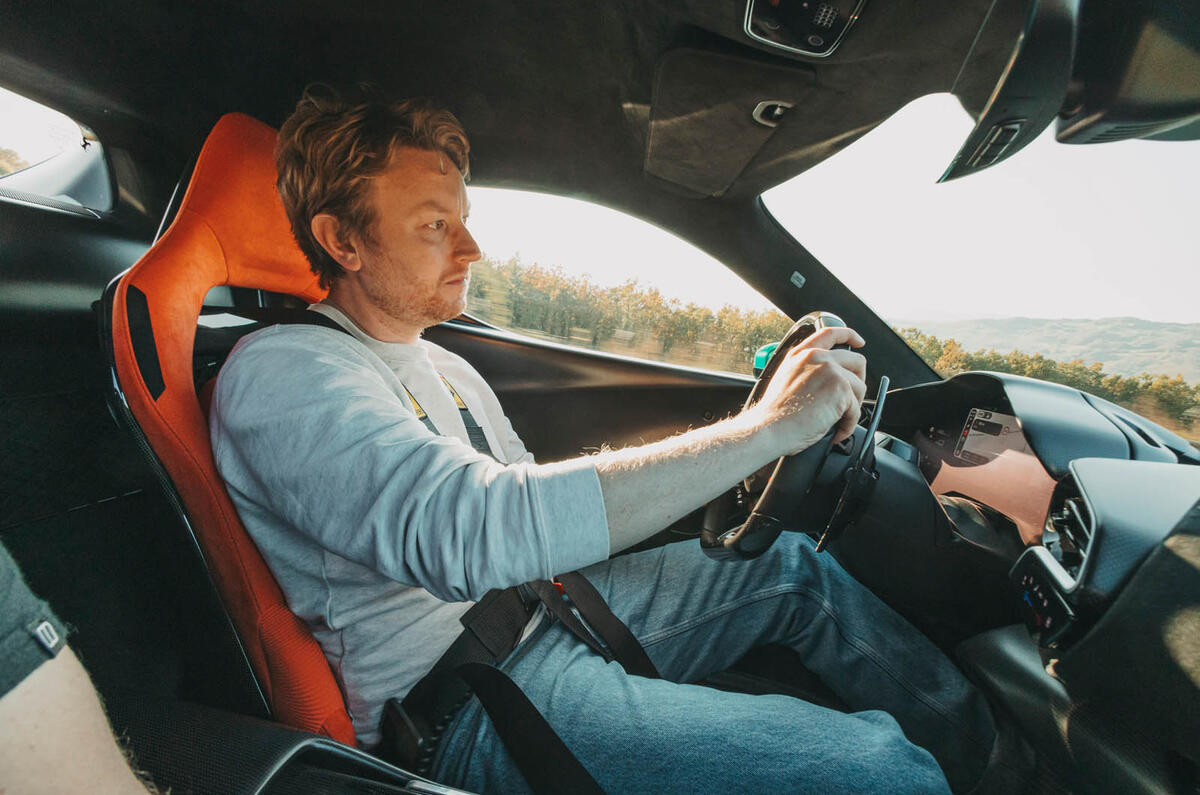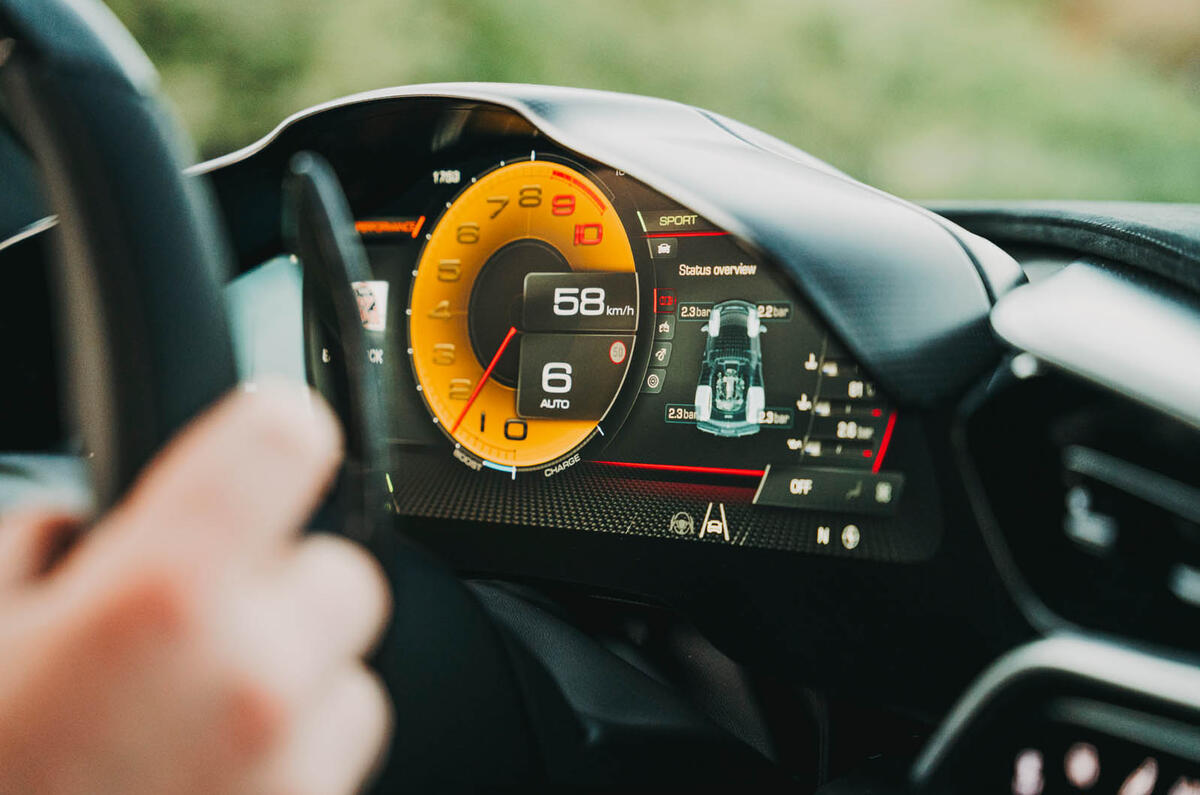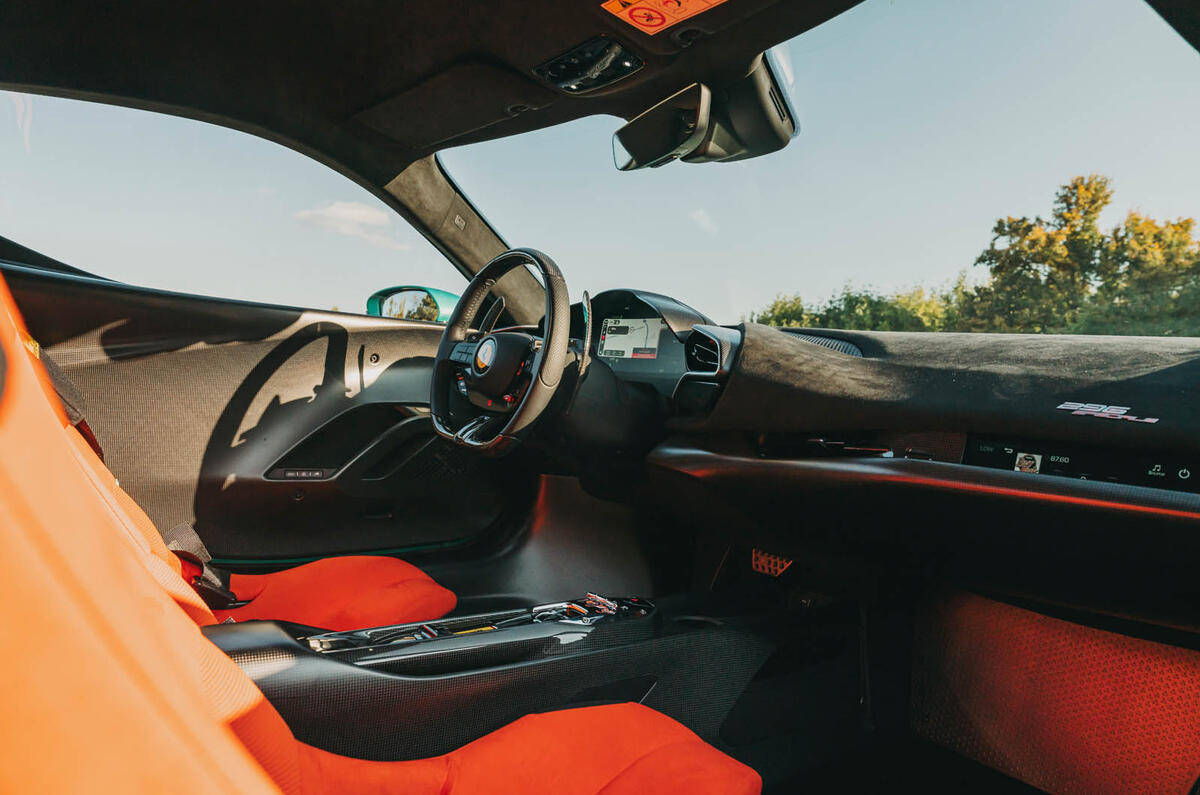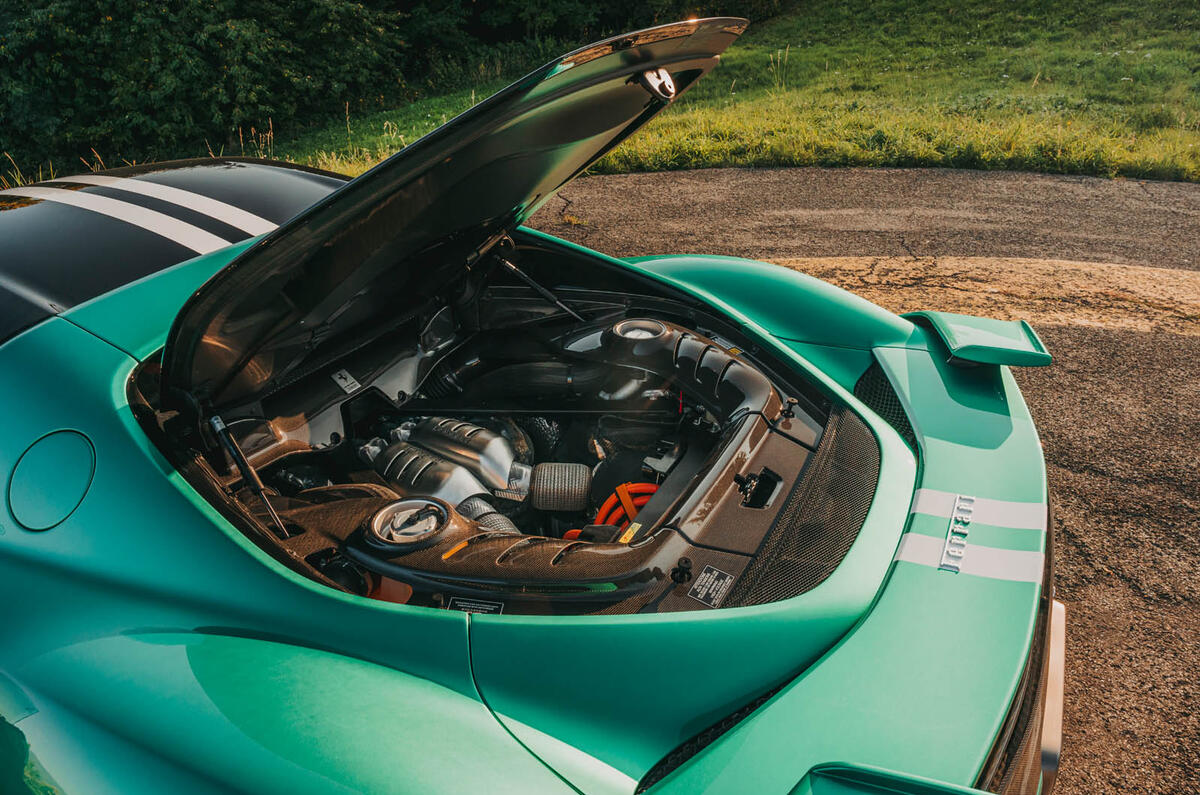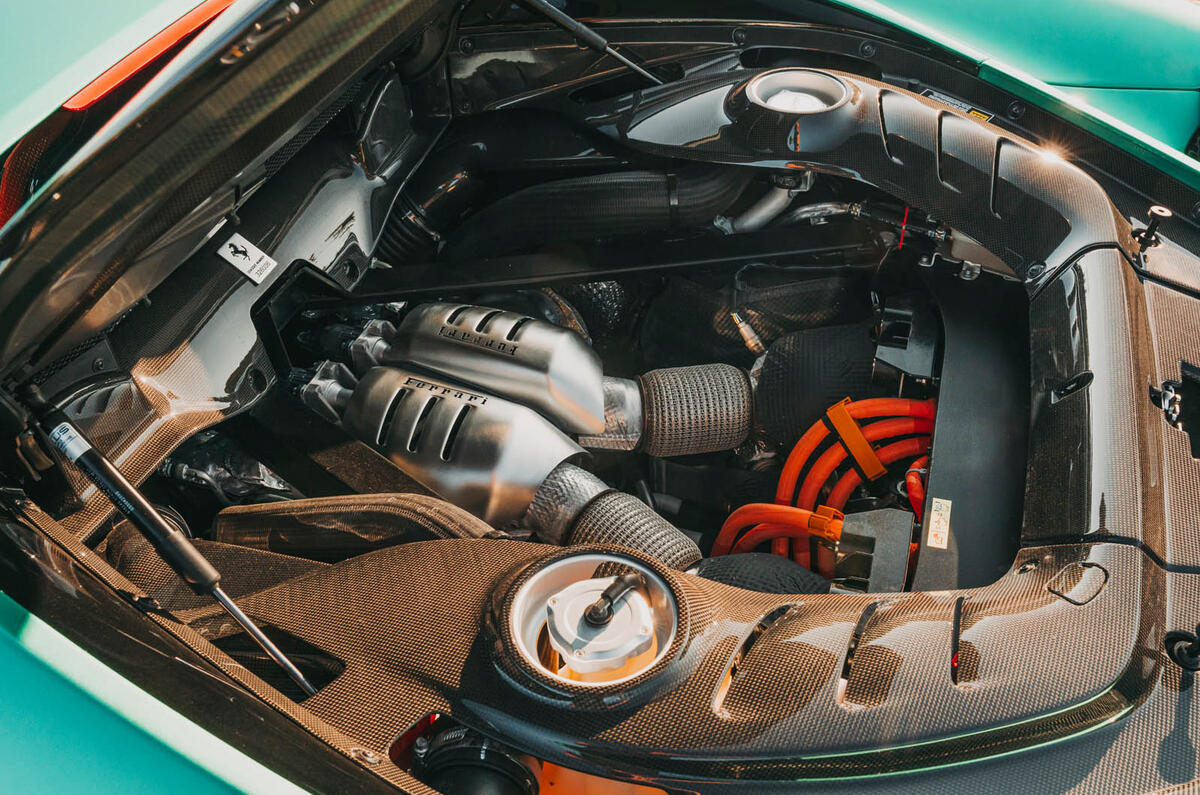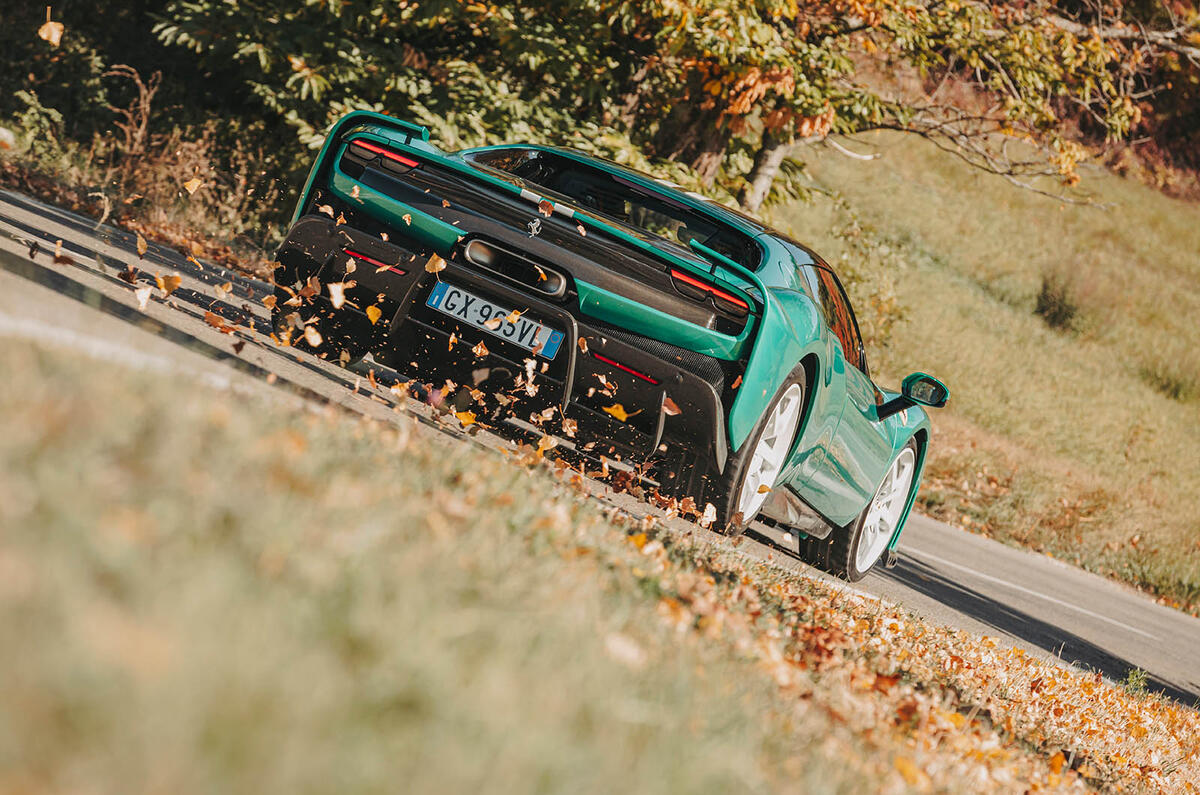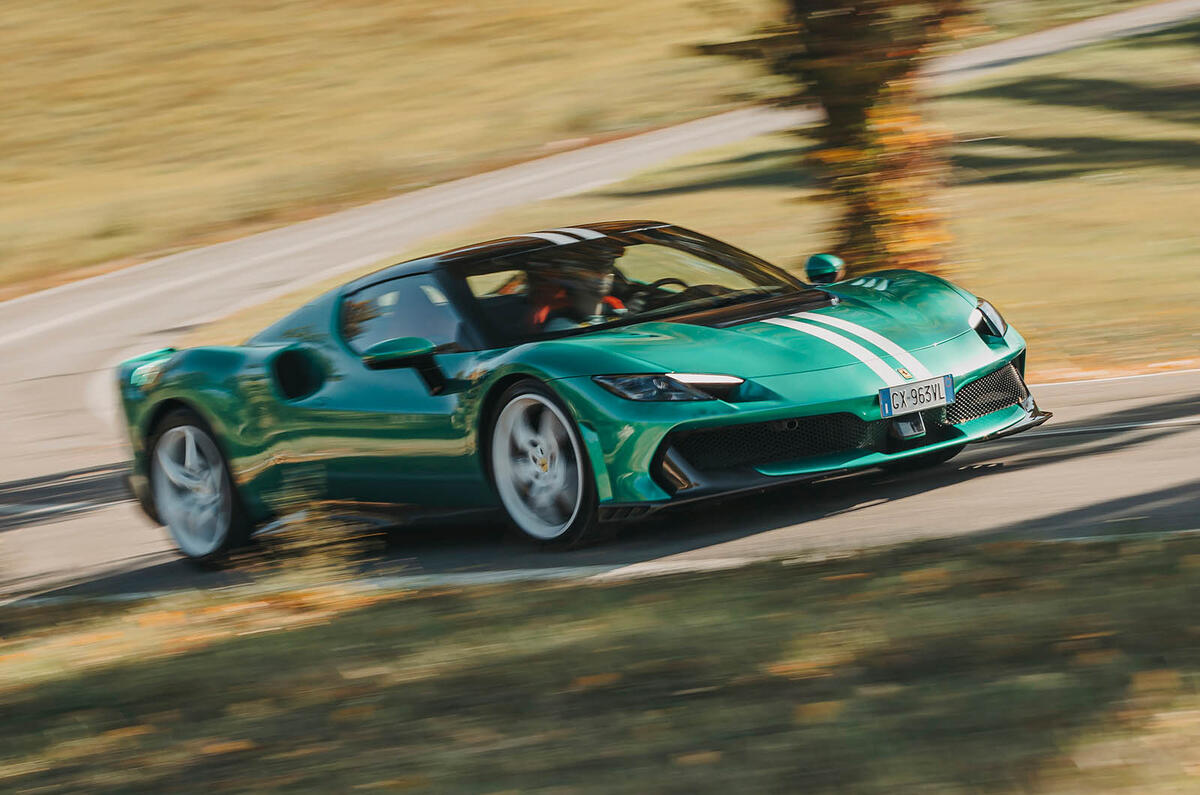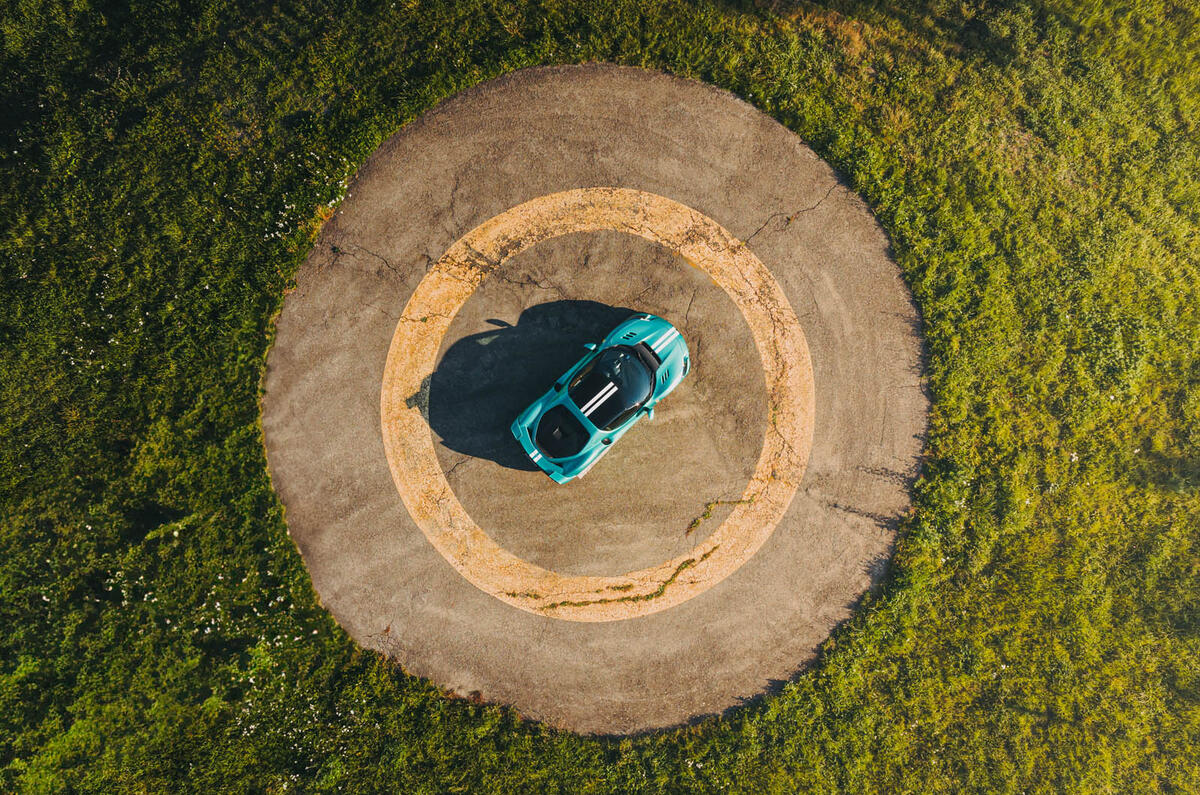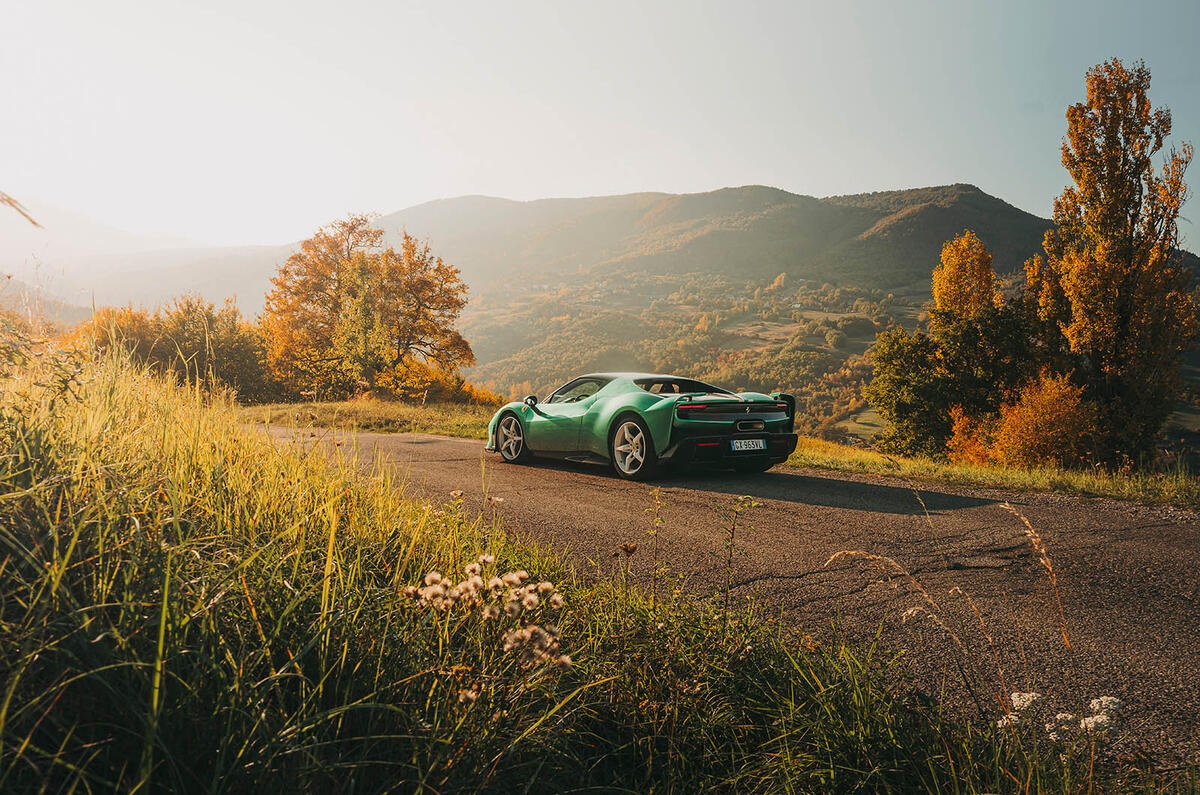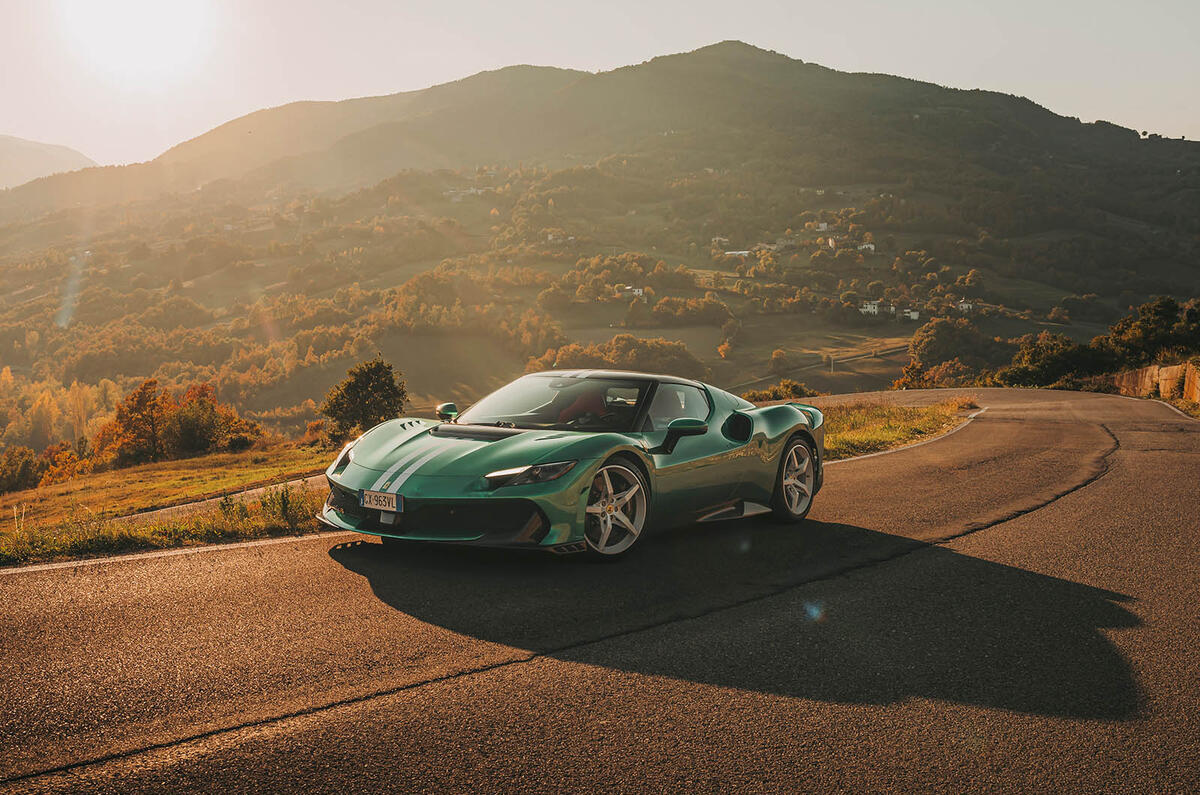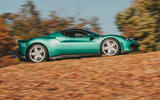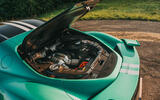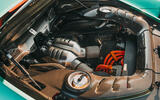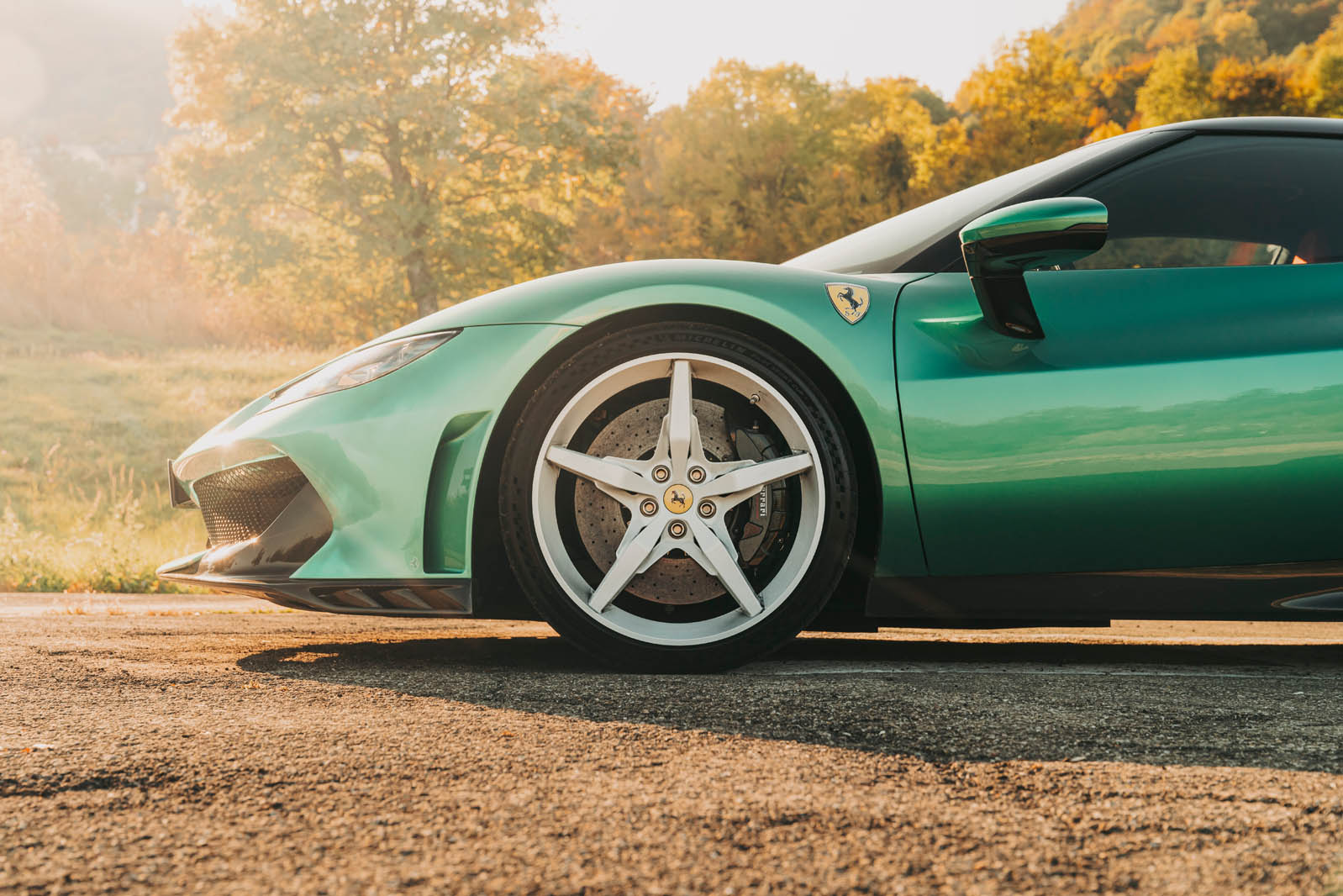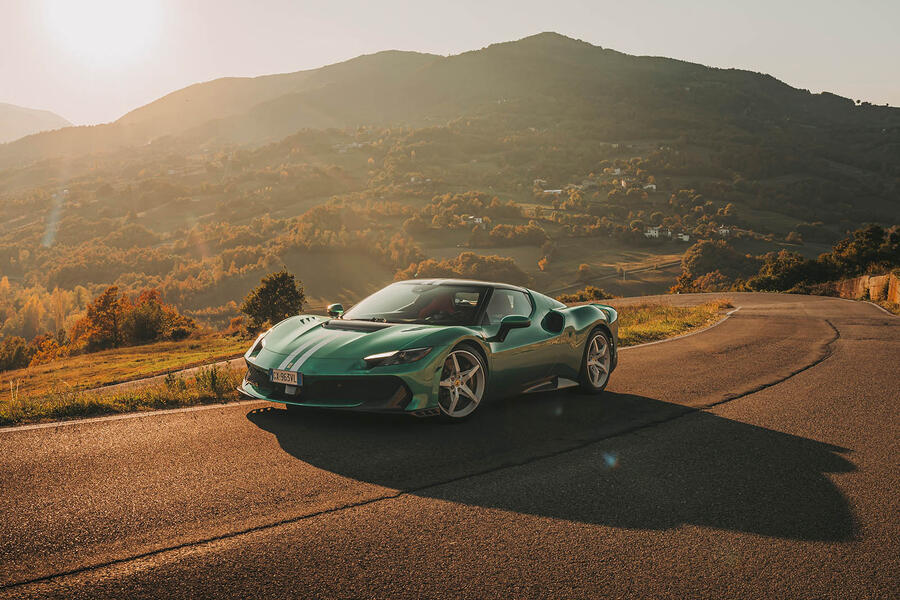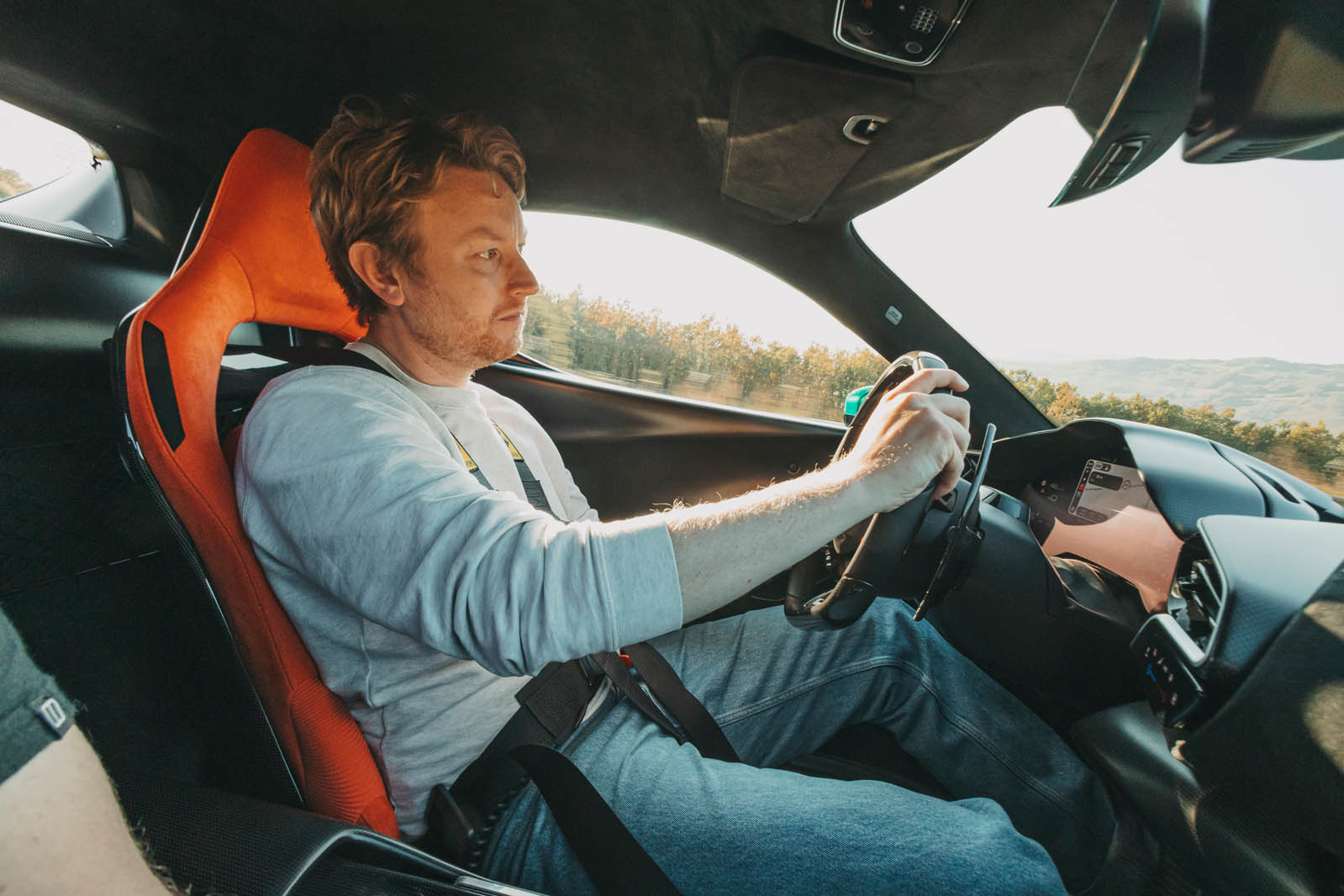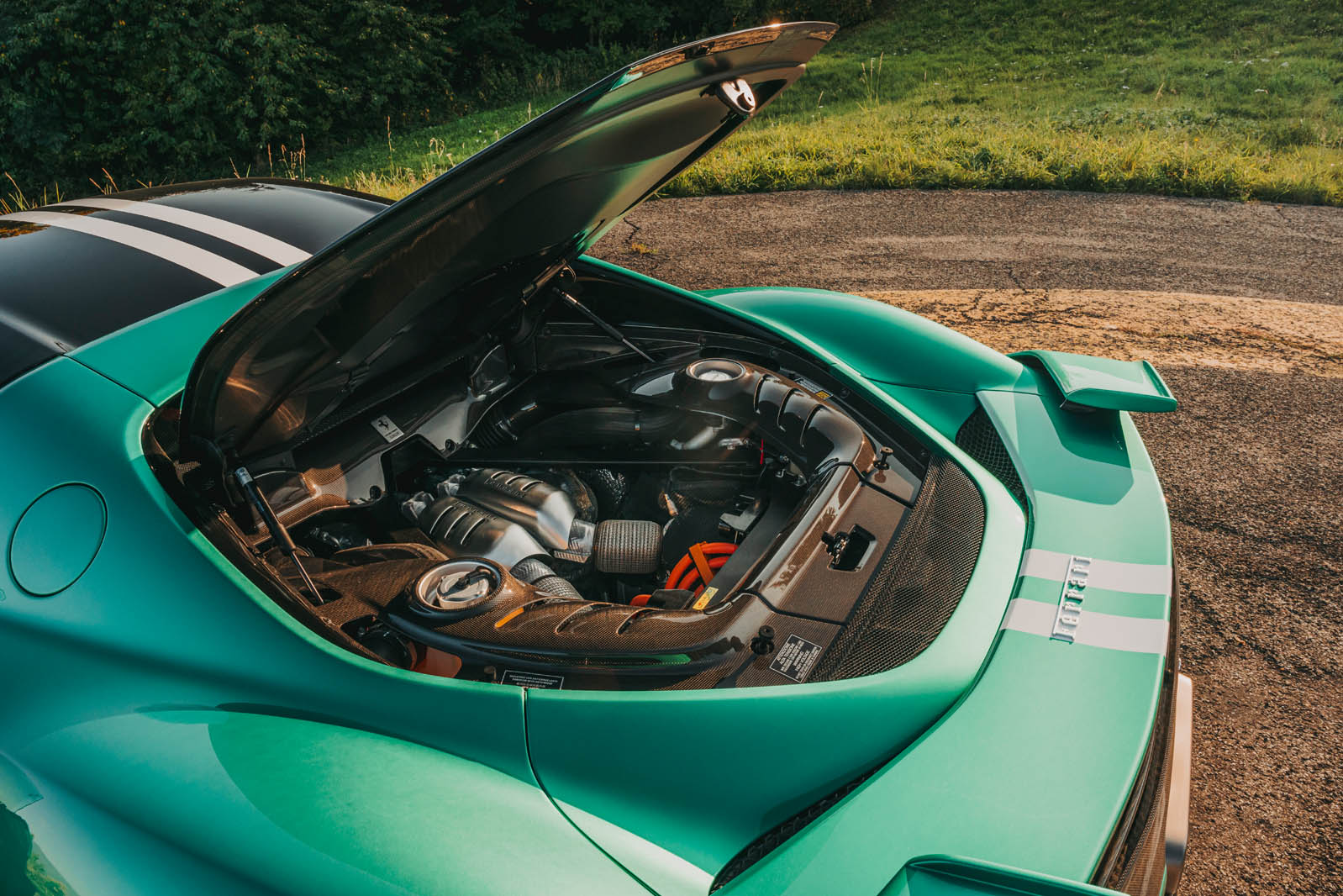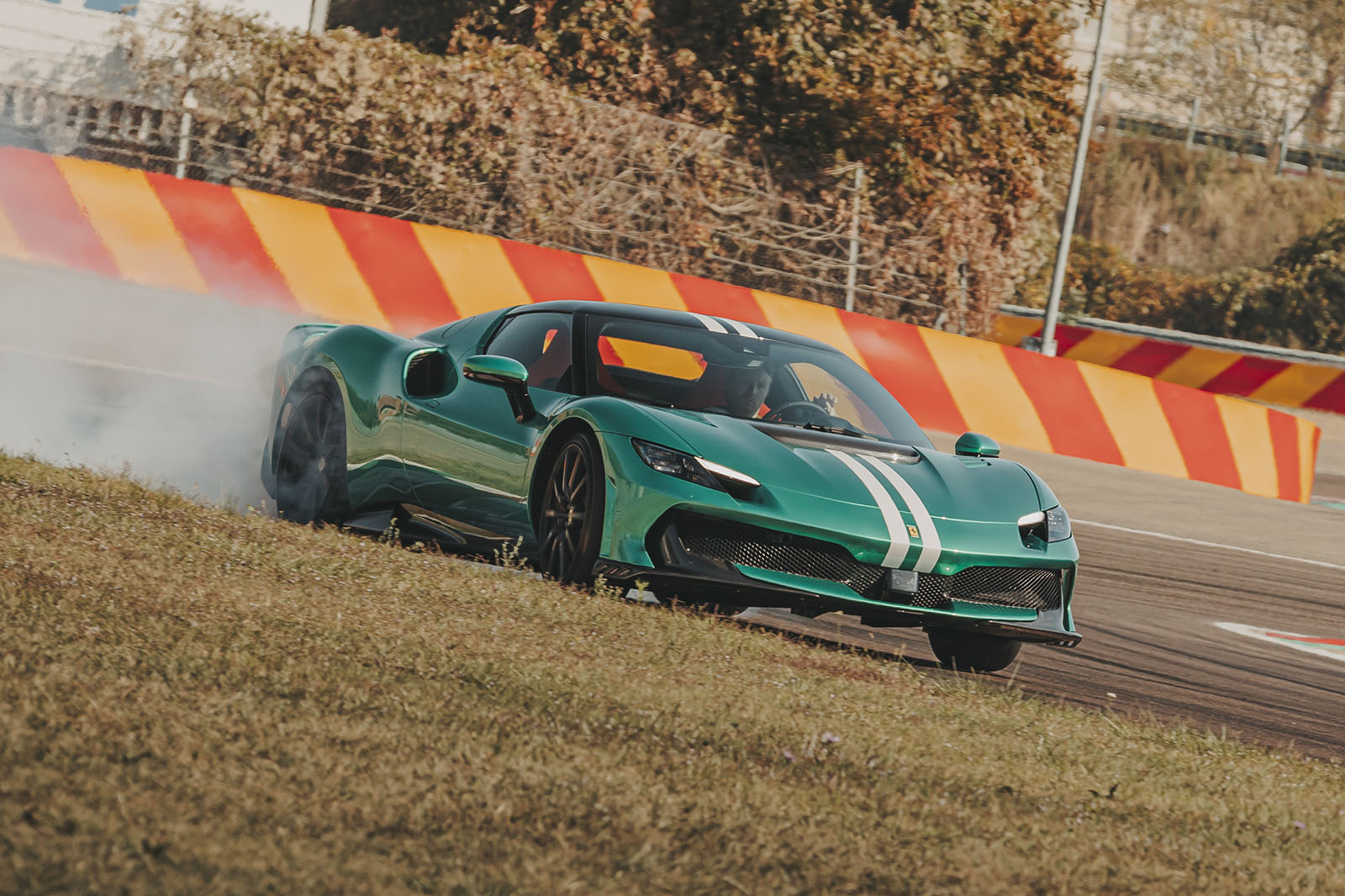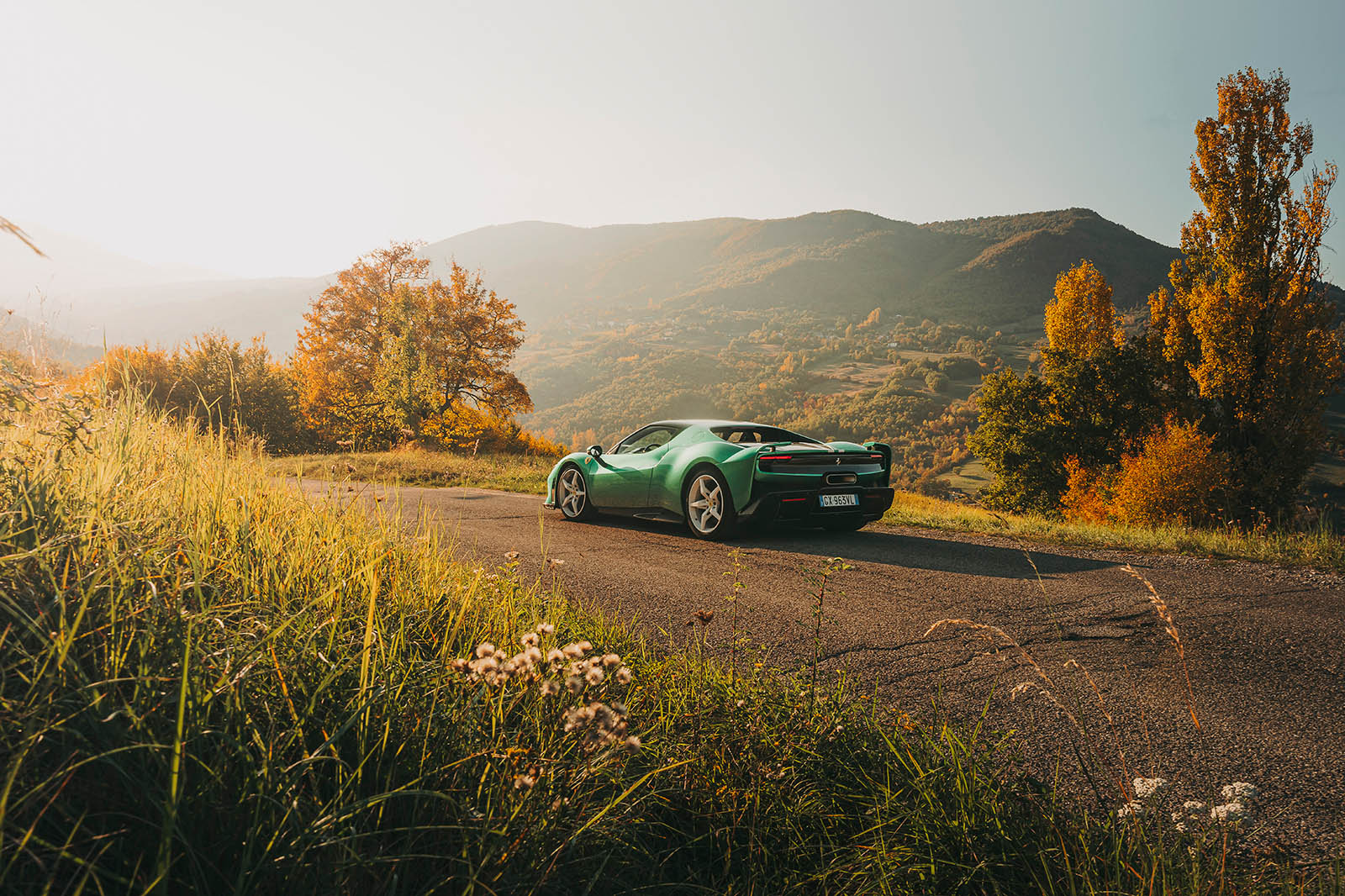There are certain things the first-time Ferrari 296 Speciale pilot needs to consider.
One is that this car has the lowest polar moment of inertia of any current Ferrari. Which is to say, it just loves to rotate. Another is that it is the most powerful purely rear-driven model the company makes. It doesn’t take Adrian Newey-level intelligence to realise this combination could result in something profoundly thrilling – or just very frightening.
Chief test driver Raffaele de Simone assures us it’s the former, but suspicion lingers. The night before our drive of the 868bhp Speciale at Fiorano and in the Apennines, I ask if it’s all getting, y’know, out of hand. Remember that the regular 296 GTB makes 49bhp less, weighs 60kg more and is set up more conservatively yet will light up its rears in fourth-gear corners. Fifth, even.
“The point of no return is the point at which you’re not able to manage the power of the car any more. We make a step only if we give you the tools to manage that extra power,” says de Simone, before ominously adding that he thinks “we’re pretty on the limit”.
The next morning, I take to the track in glorious sunshine, and before lap one is complete de Simone is predictably vindicated. Even more resplendent than its Verde Nürburgring paint is the way the Speciale makes 550bhp per tonne unnervingly manageable.
There’s an animal wildness to the heavier yet superior successor of the 488 Pista, and you could of course have a sizeable incident in any car of this ilk. Yet my sense is that you would need to be driving like a pillock for things to go badly awry. The Speciale has all of the GTB’s forgiving exuberance, only with more mechanical transparency and raw theatre. And speed. God, the speed. It’s breathtaking.



